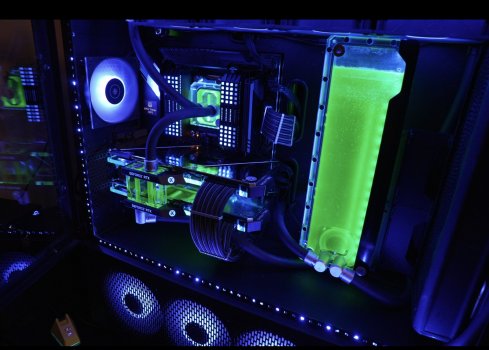What I came to find out benchmarking video type tests is that there are many variables you have to be careful with - like even SSD speed can have an impact on big files and how fast things export or render.Thanks for that; that's awesome. 45 second improvement is nothing to sneeze at. The hard part is knowing how much of that was due specifically to the encoder, vs the rendering brute of the newer card.
But these are definitely great - depends on the exact flow, but the difference certainly isn't absolutely massive from the last gen GPUs like the W5700x or Vega II - but it is a nice upgrade regardless.


